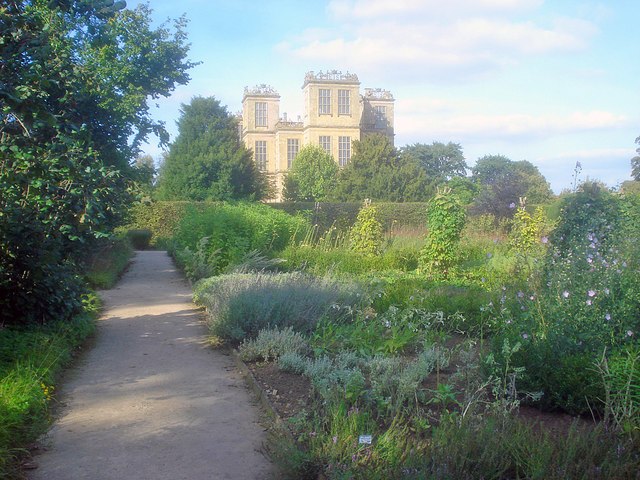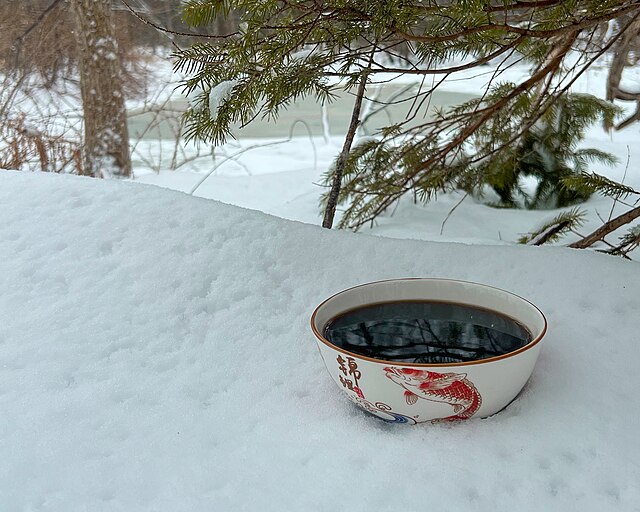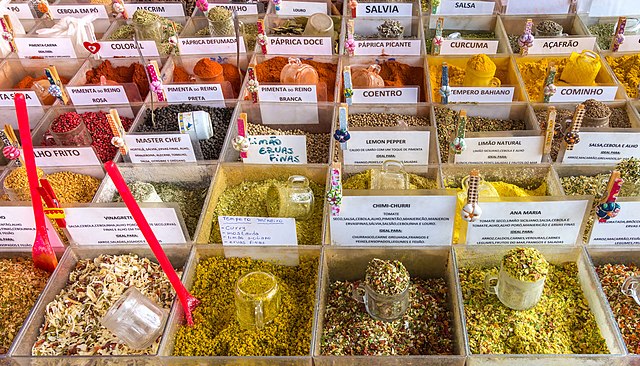In general use, herbs are a widely distributed and widespread group of plants, excluding vegetables and other plants consumed for macronutrients, with savory or aromatic properties that are used for flavoring and garnishing food, for medicinal purposes, or for fragrances. Culinary use typically distinguishes herbs from spices. Herbs generally refers to the leafy green or flowering parts of a plant, while spices are usually dried and produced from other parts of the plant, including seeds, bark, roots and fruits.
A variety of herbs are visible in this garden, including mint.
Herb garden at Hardwick Hall, Derbyshire, England, originally planted in the 1870s by Lady Louisa Egerton, recreated by the National Trust, largely following the original design.
A bundle of thyme (Thymus)
A traditional Chinese decoction (湯劑/汤剂), using Chinese herbs
In the culinary arts, a spice is any seed, fruit, root, bark, or other plant substance in a form primarily used for flavoring or coloring food. Spices are distinguished from herbs, which are the leaves, flowers, or stems of plants used for flavoring or as a garnish. Spices are sometimes used in medicine, religious rituals, cosmetics, or perfume production. They are usually classified into spices, spice seeds, and herbal categories.For example, vanilla is commonly used as an ingredient in fragrance manufacturing. Plant-based sweeteners such as sugar are not considered spices.
Spices at a central market in Agadir, Morocco
A group of Indian herbs and spices in bowls
Spices of Saúde flea market, São Paulo, Brazil
"The Mullus" harvesting pepper. Illustration from a French edition of The Travels of Marco Polo.








